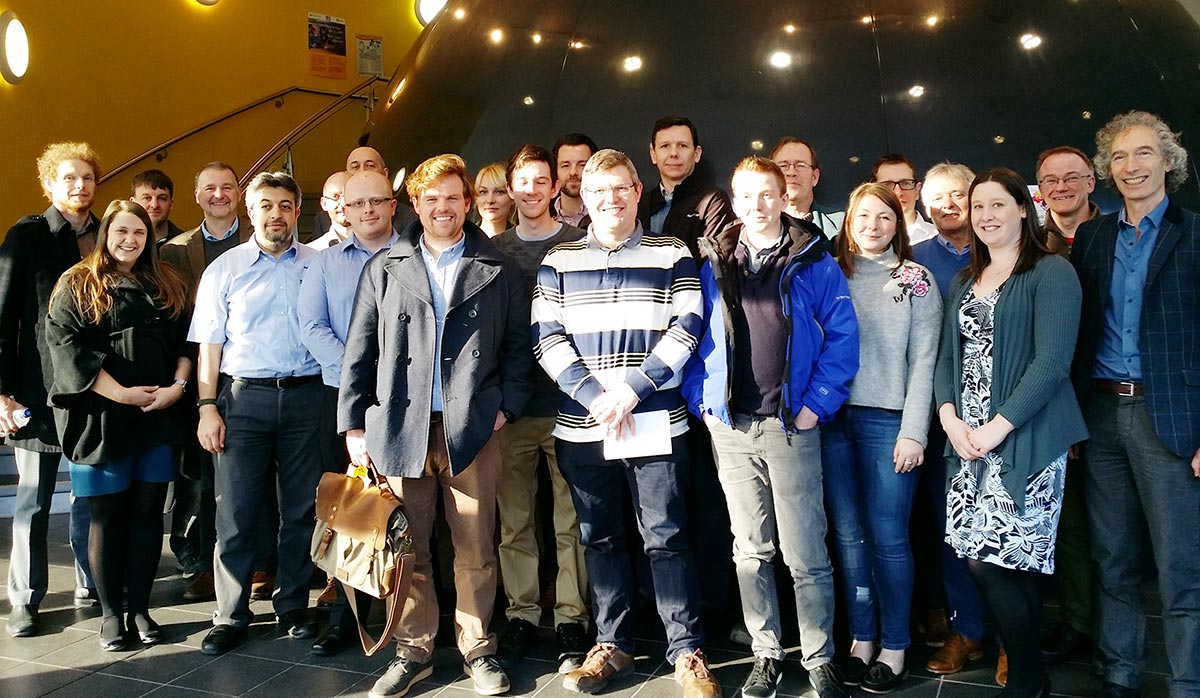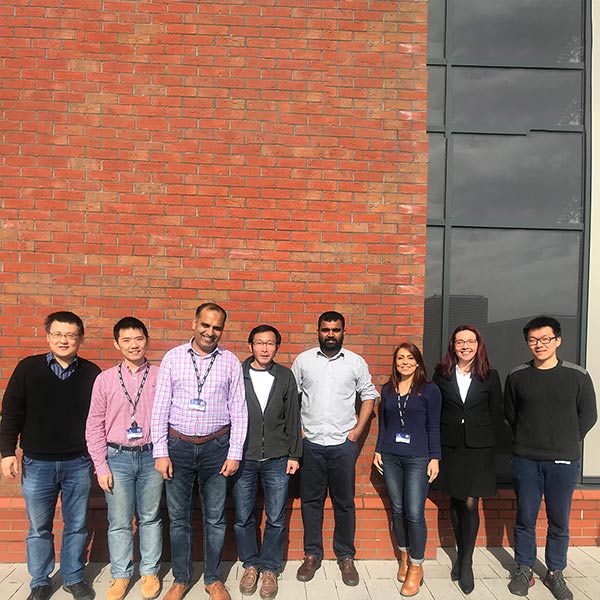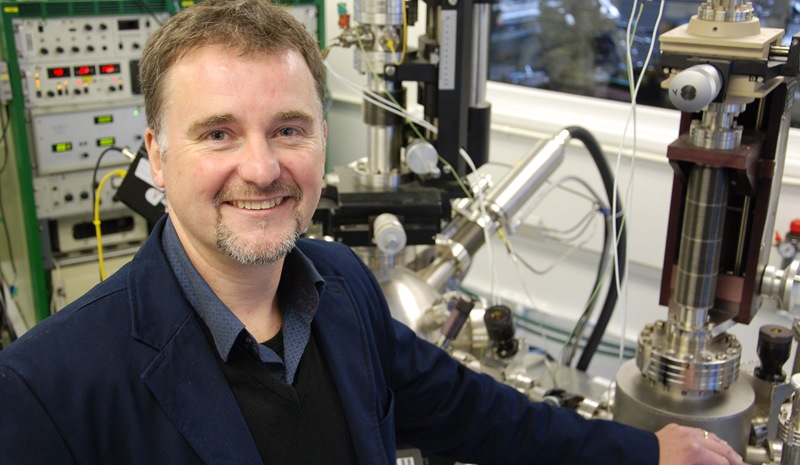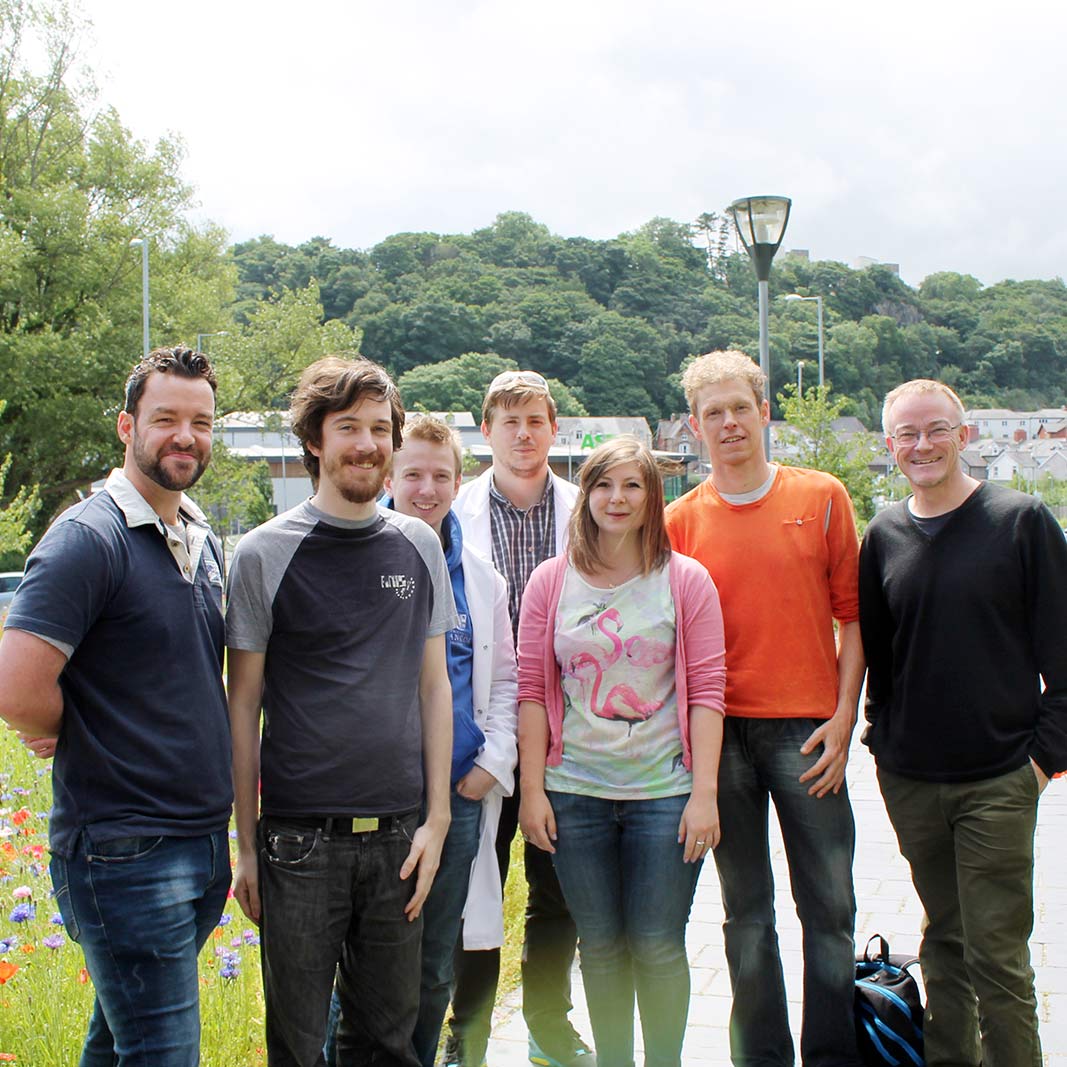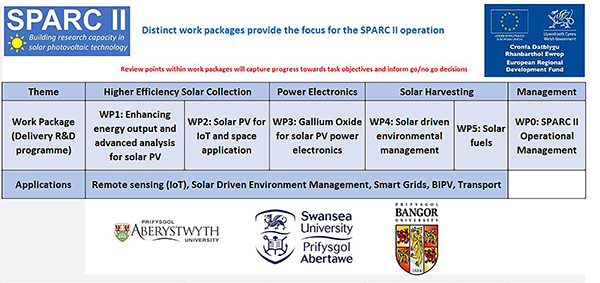SPARC II Staff papers –
Andrew J. Clayton, Ali Abbas, Peter J. Siderfin, Stephen Jones, Ana Teloeken, Ochai Oklobia, John M. Walls and Stuart J. C. Irvine, “MOCVD of II-VI HRT/Emitters for Voc Improvements to CdTe Solar Cells”, Coatings 2022, 12(2), 261; https://doi.org/10.3390/coatings12020261
Jeff Kettle et al., (inc. Stuart Irvine and Dan Lamb) “Review of technology‐specific degradation in c‐Si, CdTe, CIGS, dye sensitised, organic and perovskite solar cells in photovoltaic modules: Understanding how reliability improvements in mature technologies can enhance emerging technologies” Progress in Photovoltaics: Research and Applications, 2022/5/2
Giselle Rosetta, Tong An, Qibin Zhao, Jeremy J. Baumberg, John J. Tomes, Matt D. Gunn, and Chris E. Finlayson, “Chromaticity of structural color in polymer thin film photonic crystals” OPTICS EXPRESS 28, p36219 (2020)
Chris E. Finlayson, Giselle Rosetta and Jeremy J. Baumberg, “An Experimental and Theoretical Determination of Oscillatory Shear-Induced Crystallization Processes in Viscoelastic Photonic Crystal Media” MATERIALS 14 (18), 2021
Chris E. Finlayson, Giselle Rosetta and John J. Tomes, “Spectroscopic Ellipsometry and Optical Modelling of Structurally Colored Opaline” Thin-Films APPLIED SCIENCES 12 (10), 2022
Giselle Rosetta, Matthew Gunn, John J. Tomes, Mike Butters, Jens Pieschel, Frank Hartmann , Markus Gallei and Chris E. Finlayson “Transparent Polymer Opal Thin Films with Intense UV Structural Color”, MOLECULES 27, 3774 2022)
Lijie Li, Single-layer Ga2O3/graphene heterogeneous structure with optical switching effect, Carbon Trends, Volume 7, (April 2022), 100153
B. P. Reed, M. E. Bathen, J. W. R. Ash, C. J. Meara, A. A. Zakharov, J. P. Goss, J. W. Wells, D. A. Evans, S. P. Cooil, The Diamond (111) Surface Reconstruction and Epitaxial Graphene Interface, arXiv (2022).09151
Thomas, S.K.; Pockett, A.; Seunarine, K.; Spence, M.; Raptis, D.; Meroni, S.; Watson, T.; Jones, M.; Carnie, M.J. Will the Internet of Things Be Perovskite Powered? Energy Yield Measurement and Real-World Performance of Perovskite Solar Cells in Ambient Light Conditions. IoT (2022), 3, 109-121.
Worsley, D Raptis, SMP Meroni, R Patidar, A Pockett, T Dunlop, SJ Potts, R Bolton, CME Charbonneau, M Carnie, E Jewell, T Watson, Green solvent engineering for enhanced performance and reproducibility in printed carbon-based mesoscopic perovskite solar cells and modules, Mater. Adv., (2022), 3, 1125-1138
O.Oklobia, G.Kartopu, S.Jones, P.Siderfin, B.Grew, H.K.H.Lee, W.C.Tsoi, AliAbbas, J.M.Walls, D.L.McGotte, M.O.Reese and S.J.C.Irvine “Development of arsenic doped Cd(Se,Te) absorbers by MOCVD for thin film solar cells”, Solar Energy Materials and Solar Cells, Vol 231, (2021), pp11325
Lijie Li, “Piezoelectric properties of substitutionally doped β-Ga2O3”, AIP Advances, volume 11, (2021)
Han Huang, Senthooran Balasubramaniam, Grazia Todeschini and Surya Santoso “A Photovoltaic-Fed DC-Bus Islanded Electric Vehicles Charging System Based on a Hybrid Control Scheme”, Electronics, Vol 10, (2021) pp1142
Dan A. Lamb, Stuart J. C. Irvine, Mark A. Baker, Craig I. Underwood and Simran Mardhani, Thin film cadmium telluride solar cells on ultra‐thin glass in low earth orbit—3 years of performance data on the AlSat‐1N CubeSat mission, PiP, https://doi.org/10.1002/pip.3423 (2021)
Ralph S. Hall, Dan A. Lamb and Stuart J. C. Irvine Back Contacts Materials Used in Thin Film CdTe Solar Cells – A Review, Energy Science & Engineering, https://doi.org/10.1002/ese3.843 (2021)
Saqib Rafique, Nafiseh Badiei, Matthew R. Burton, Jorge Eduardo Gonzalez-Feijoo, Matthew J. Carnie, Afshin Tarat, Lijie Li, Paper Thermoelectrics by a Solvent-Free Drawing Method of All Carbon-Based Materials, ACS Omega, 6, 7, 5019–5026 (2021)
Grazia Todeschini, Han Huang, Noel Bristow, Tudur Wyn David and Jeff Kettle “A Novel Computational Model for Organic PV Cells and Modules”, International Journal of Smart Grid, Vol 4, (2020) pp157-163
Lightweight and Bulk Organic Thermoelectric Generators Employing Novel P-Type Few-Layered Graphene Nanoflakes, ACS Appl. Mater. Interfaces 2020, 12, 27, 30643–30651
AC Teloeken, DA Lamb, TO Dunlop, SJC Irvine, Effect of bending test on the performance of CdTe solar cells on flexible ultra-thin glass produced by MOCVD, Solar Energy Materials and Solar Cells 211, 110552 (2020)
Shafiul Alom Monir, Giray Kartopu, Vincent Barrioz, Dan Lamb, Stuart Irvine, Xiaogang Yang, Yuriy Vagapov, Thin CdTe Layers Deposited by a Chamberless Inline Process using MOCVD, Simulation and Experiment, Appl. Sci. 2020, 10(5), 1734; https://doi.org/10.3390/app10051734 (2020)
Vieira, Douglas H.; Badiei, Nafiseh; Evans, Jonathan E.; Alves, Neri; Kettle, Jeffrey; Li, Lijie, Improvement of the Deep UV Sensor Performance of a β-Ga2O3 Photodiode by Coupling of Two Planar Diodes, IEEE Transactions on Electron Devices, Vol 63, No. 11, 11.2020, p. 4947 - 4952, (2020)
Enhancement of the photocurrent and efficiency of CdTe solar cells suppressing the front contact reflection using a highly-resistive ZnO buffer layer, Solar Energy Materials and Solar Cells, Volume 191pp, 78-82, (2019)
G.Kartopu, O. Oklobia. D.Turkay, D.R.Diercks, P.Gorman, V. Barrioz, .Campbell, J.D.Major, M.K.Al Turkestani, S.Yercibc, T.M.Barnes, N.S.Beattie, G.Zoppie, S. Jones and S.J.C.Irvine , Study of thin film poly-crystalline CdTe solar cells presenting high acceptor concentrations achieved by in-situ arsenic doping, Solar Energy Materials and Solar Cells 194, pp259-267, (2019)
Ochai Oklobia, Giray Kartopu, Stuart J. C. Irvine, CdCl2 Activation of the ZnTe:As Back Contact Layer in CdTe Thin Film Solar Cells, Employing a CdS Sacrificial Layer, IEEE 46th Photovoltaic Specialists Conference (PVSC), Chicago, IL, USA, 2019, pp. 0165-0168, doi: 10.1109/PVSC40753.2019.8980552, (2019)
Jiaheng Nie, Yan Zhang, Lijie Li, Jizheng Wang, Piezo-phototronic Effect Enhanced Photodetector Based on MAPbI3 Perovskite, Journal of Materials Chemistry C, Jan 2020. DOI: 10.1039/c9tc05721h
J. Barbe, A. Pockett, V. Stoichkov, D. Hughes, H. K. H. Lee, M. Carnie, T. Watson, and W. C. Tsoi, Insitu investigation of perovskite solar cells' efficiency and stability in a mimic stratospheric environment for high-altitude pseudo-satellites,J. Mater. Chem. C, 2020.
J. Barbe, D. Hughes, Z. Wei, A. Pockett, H. K. H. Lee, K. C. Heasman, M. J. Carnie, T. M. Watson, and W. C. Tsoi, Radiation Hardness of Perovskite Solar Cells Based on Aluminium-Doped Zinc Oxide Electrode under Proton irradiation, Solar Rapid Research Letters, vol. 26, no. 7, pp. 1129-1134, 2019.
M. R. Burton, S. Mehraban, D. Beynon, J. McGettrick, T. Watson, N. P. Lavery, and M. J. Carnie, 3D Printed SnSe Thermoelectric Generators with High Figure of Merit, Advanced Energy Materials, p. 1 900 201, 2019.
M. R. Burton, S. Mehraban, J. McGettrick, T. Watson, N. P. Lavery, and M. J. Carnie, Earth abundant, non-toxic, 3D printed Cu2xS with high thermoelectric figure of merit, J. Mater. Chem. A, vol. 7, pp. 25 586-25 592, 44 2019.
H. K. H. Lee, J. Barbe, S. M. P. Meroni, T. Du, C.-T. Lin, A. Pockett, J. Troughton, S. M. Jain, F. De Rossi, J. Baker, et al., Outstanding Indoor Performance of Perovskite Photovoltaic Cells Effect of Device Architectures and Interlayers, Solar Rapid Research Letters, vol. 3, no. 1, p. 1 800 207, 2019.
Pockett, H. K. H. Lee, B. L. Coles, W. C. Tsoi, and M. J. Carnie, A combined transient photovoltage and impedance spectroscopy approach for a comprehensive study of interlayer degradation in non-fullerene acceptor organic solar cells, Nanoscale, 2019.
Y. Yan, Y. Wei, C. Zhao, M. Shi, L. Chen, C. Fan, M. J. Carnie, R. Yang, and Y. Xu, A modified template-removal process to improve the specific surface area and hierarchical porosity of carbon materials, Journal of Solid State Chemistry, vol. 269, pp. 24-29, 2019.
Rafique, Saqib., Roslan, Nur Adilah., Abdullah, Shahino Mah., Li, Lijie., Supangat, Azzuliani., Jilani, Asim. & Iwamoto, Mitsumasa. (2019). UV- ozone treated graphene oxide/ PEDOT:PSS bilayer as a novel hole transport layer in highly efficient and stable organic solar cells. Organic Electronics 66, 32-42.
Deng, Shuo., Zhang, Yan. & Li, Lijie. (2019). Study on electronic and optical properties of the twisted and strained MoS2/PtS2 heterogeneous interface. Applied Surface Science 476, 308-316.
Deng, Shuo., Cai, Xiang., Zhang, Yan. & Li, Lijie. (2019). Enhanced thermoelectric performance of twisted bilayer graphene nanoribbons junction. Carbon
M. R. Burton, T. Liu, J. McGettrick, S. Mehraban, J. Baker, A. Pockett, T. Watson, O. Fenwick, and M. J. Carnie, Thin film tin selenide (SnSe) thermoelectric generators exhibiting ultralow thermal conductivity, Advanced Materials, vol. 30, no. 31, p. 1 801 357, 2018.
M. Li, C. Zhao, Z.-K. Wang, C.-C. Zhang, H. K. H. Lee, A. Pockett, J. Barbe, W. C. Tsoi, Y.-G. Yang, M. J. Carnie, et al., Interface modification by ionic liquid: a promising candidate for indoor light harvesting and stability improvement of planar perovskite solar cells, Advanced Energy Materials, vol. 8, no. 24, p. 1 801 509, 2018.
S. M. P. Meroni, Y. Mouhamad, F. D. Rossi, A. Pockett, J. Baker, R. Escalante, J. Searle, M. J. Carnie, E. Jewell, G. Oskam, and T. M. Watson, Homogeneous and highly controlled deposition of low viscosity links and application on fully printable perovskite solar cells, Science and Technology of Advanced Materials, vol. 19, no. 1, 2018.
Z. Wei, C. M. Fung, A. Pockett, T. O. Dunlop, J. D. McGettrick, P. J. Heard, O. J. Guy, M. J. Carnie, J. H. Sullivan, and T. M. Watson, Engineering of a Mo/Si x N y Diffusion Barrier to Reduce the Formation of MoS2 in Cu2ZnSnS4 Thin Film Solar Cells, ACS Applied Energy Materials, vol. 1, no. 6, pp. 2749-2757, 2018.
Stoichkov, V., Kumar, D., Tyagi, P. and Kettle, J., 2018. Multistress Testing of OPV Modules for Accurate Predictive Aging and Reliability Predictions. IEEE Journal of Photovoltaics, (99), pp.1-8.
Bristow, N. and Kettle, J., 2018. Outdoor organic photovoltaic module characteristics: Benchmarking against other PV technologies for performance, calculation of Ross coefficient and outdoor stability monitoring. Solar Energy Materials and Solar Cells, 175, pp.52-59.
G Kartopu, D Turkay, C Ozcan, W Hadibrata, P Aurang, S Yerci, HE Unalan, V Barrioz, Y Qu, L Bowen, AK Gürlek, P Maiello, R Turan, SJC Irvine “Photovoltaic performance of CdS/CdTe junctions on ZnO nanorod arrays”, Solar Energy Materials and Solar Cells, Vol 176 (2018) 100-108
Fernandes, R.V., Urbano, A., Duarte, J.L., Bristow, N., Kettle, J. and Laureto, E., 2018. Tuning the optical properties of luminescent down shifting layers based on organic dyes to increase the efficiency and lifetime of P3HT: PCBM photovoltaic devices. Journal of Luminescence
Stoichkov, V., Bristow, N., Troughton, J., De Rossi, F., Watson, T.M. and Kettle, J., 2018. Outdoor performance monitoring of perovskite solar cell mini-modules: Diurnal performance, observance of reversible degradation and variation with climatic performance. Solar Energy, 170, pp.549-556.
Melvin, A.A., Stoichkov, V.D., Kettle, J., Mogilyansky, D., Katz, E.A. and Visoly-Fisher, I., 2018. Lead iodide as a buffer layer in UV-induced degradation of CH 3 NH 3 PbI 3 films. Solar Energy, 159, pp.794-799.
Hughes, L., Bristow, N., Korochkina, T., Sanchez, P., Gomez, D., Kettle, J. and Gethin, D., 2018. Assessing the potential of steel as a substrate for building integrated photovoltaic applications. Applied Energy, 229, pp.209-223.
Gongwei Hu, Y Zhang, L Li, ZL Wang, “Piezotronic Transistor Based on Topological Insulators”, ACS Nano, vol. 12, no. 1, 2018, pp. 779-785. doi: 10.1021/acsnano.7b07996 https://pubs.acs.org/doi/abs/10.1021/acsnano.7b07996
L Jin, X Yan, X Wang, W Hu, Y Zhang and L Li, “Dynamic model for piezotronic and piezo-phototronic devices under low and high frequency external compressive stresses", Journal of Applied Physics, vol. 123, p. 025709, 2018. (featured) DOI: 10.1063/1.5009485 http://aip.scitation.org/doi/full/10.1063/1.5009485
Y. Zhang, J. Nie, and L. Li “Piezotronic effect on the luminescence of quantum dots for micro/nano-newton force measurement” Nano Research, (2017) pp.1-10
Pockett and M. J. Carnie, Ionic influences on recombination in perovskite solar cells, ACS Energy Letters, vol. 2, no. 7, pp. 1683-1689, 2017.
L. Furnell,P. Holliman, A. Connell, E. W. Jones, R. Hobbs,C. P. Kershaw, R. Anthony, J. Searle, T. Watson and J. McGettrick “Digital Imaging to Simultaneously Study Device Lifetimes of Multiple Dye-sensitized Solar Cells” Sustainable Energy & Fuels, Vol 1, (2017) pp.362 – 370
P. Capper, S. J. C. Irvine, T. Joyce “Epitaxial Crystal Growth: Methods and Materials” Springer Handbook of Electronic and Photonic Materials, (2017)
A. Amirkhalili, V. Barrioz, S. J. C. Irvine, N. S. Beattie, G. Zoppi “A combined Na and Cl treatment to promote grain growth in MOCVD grown CdTe thin films” Journal of Alloys and Compounds, Vol 699, (2017) pp.969 - 975
R. A. Belisle, W. H. Nguyen, A. R. Bowring, P. Calado, X. Li, S. J. C. Irvine, M. D. McGehee, P. R. F. Barnes and B. C. O'Regan “Interpretation of inverted photocurrent transients in organic lead halide perovskite solar cells: proof of the field screening by mobile ions and determination of the space charge layer widths” Energy & Environmental Science, Vol 10, (2017) pp.192 - 204
A. J. Clayton, M. A. Baker, S. Babar, R. Grilli, P. N. Gibson, G. Kartopu, D. A. Lamb, V. Barrioz, S. J. C. Irvine “Effects of Cd 1-x Zn x S alloy composition and post-deposition air anneal on ultra-thin CdTe solar cells produced by MOCVD” Materials Chemistry and Physics, Vol 192, (2017) pp.244 – 252
D. A. Lamb, C. I. Underwood, V. Barrioz, R. Gwilliam, J. Hall, M. A. Baker, S. J. C. Irvine “Proton irradiation of CdTe thin film photovoltaics deposited on cerium‐doped space glass” Progress in Photovoltaics: Research and Applications, (2017)
J. Kettle, V. Stoichkov, D. Kumar, M. Corazza, S. A. Gevorgyan, F. C. Krebs “Using ISOS consensus test protocols for development of quantitative life test models in ageing of organic solar cells” Solar Energy Materials and Solar Cells, Vol 167, (2017) pp.53 - 59
D. Kumar, V. Stoichkov, S. Ghosh, G. C. Smith, J. Kettle “Mixed-dimension silver nanowires for solution-processed, flexible, transparent and conducting electrodes with improved optical and physical properties” Flexible and Printed Electronics, Vol 2, Issue: 1, (2017) pp. 15005
D. A. Lamb, S. J. C. Irvine, A. J. Clayton, G. Kartopu, V. Barrioz, S. D. Hodgson, M. A. Baker, R. Grilli, J. Hall, C. I. Underwood, and R. Kimber “ Characterization of MOCVD Thin-Film CdTe Photovoltaics on Space-Qualified Cover Glass” IEEE Journal of Photovoltaics, Vol 6, Issue: 2, (2016) pp.557 – 561
S.M. Abdalhadi, A. Connell, X. Zhang, A. A. Wiles, M. L. Davies, P. J. Holliman, G. Cooke “Convenient synthesis of EDOT-based dyes by CH-activation and their application as dyes in dye-sensitized solar cells” J. Mater. Chem. A, Vol 4, (2016), pp.15655 - 15661
Z. Ding, V. Stoichkov, M. Horie, E. Brousseau, J. Kettle “Spray coated silver nanowires as transparent electrodes in OPVs for Building Integrated Photovoltaics applications” Solar Energy Materials and Solar Cells, Vol 157, (2016) pp.305 – 311
J. Kettle, N. Bristow, D. T. Gethin, Z. Tehrani, O. Moudam, B. Li, E. A. Katz, G.A. dos Reis Benatto, F. C. Krebs, “Printable luminescent down shifter for enhancing efficiency and stability of organic photovoltaics” Solar Energy Materials and Solar Cells, Vol 144, (2016) pp. 481 – 487
R. V. Fernandes, N. Bristow, V. Stoichkov, H. S. Anizelli, D. Scapin, L. José, E. Laureto, J. Kettle, “Development of multidye UV filters for OPVs using luminescent materials” Journal of Physics D: Applied Physics, Vol 50, Issue: 2, (2016) pp.25103
J. Kettle, Z. Ding, M. Horie, G.C. Smith, “XPS analysis of the chemical degradation of PTB7 polymers for organic photovoltaics” Organic Electronics, Vol 39, (2016) pp.222 – 228
J. Kettle, H. Waters, M. Horie, G. C. Smith, “Alternative selection of processing additives to enhance the lifetime of OPVs” Journal of Physics D: Applied Physics, Vol 49, Issue: 8, (2016) pp.85601
Z. Ding, J. Kettle, M. Horie, S. W. Chang, G. C. Smith, A. I. Shames, E. A. Katz “Efficient solar cells are more stable: the impact of polymer molecular weight on performance of organic photovoltaics” Journal of Materials Chemistry A, Vol 4, Issue: 19, (2016) pp.7274 - 7280
James D.McGettrick, Katherine Hooper, Adam Pockett, Jenny Baker, Joel Troughton, Matthew Carnie, Trystan Watson, Sources of Pb(0) artefacts during XPS analysis of lead halide perovskites, Materials Letters, Volume 251, 15 September 2019, Pages 98-101
Adam Pockett, Dimitrios Raptis, Simone M. P. Meroni, Jenny Baker, Trystan Watson, Matthew Carnie, Origin of Exceptionally Slow Light Soaking Effect in Mesoporous Carbon Perovskite Solar Cells with AVA Additive, J. Phys. Chem. C2019, 123, 18, 11414-11421
Phil Calado, Dan Burkitt, Jizhong Yao, Joel Troughton, Trystan M. Watson, Matt J. Carnie, Andrew M. Telford, Brian C. O’Regan, Jenny Nelson, and Piers R.F. Barnes, Identifying Dominant Recombination Mechanisms in Perovskite Solar Cells by Measuring the Transient Ideality Factor, Phys. Rev. Applied, 11, 044005 – Published 2 April 2019
Benjamin Smith, Joel Troughton, Anthony Lewis, James McGettrick, Adam Pockett, Matthew Carnie, Cecile Charbonneau, Cameron Pleydell‐Pearce, Justin Searle, Paul Warren, Su Varma, Trystan Watson, Mass Manufactured Glass Substrates Incorporating Prefabricated Electron Transport Layers for Perovskite Solar Cells, Advanced Materials Interfaces, Vol 6, Issue 6, 2019, 1801773
C. Teloeken, D. A. Lamb, T. O. Dunlop and S.J.C. Irvine, Effect of bending test on the performance of CdTe solar cells on flexible ultra-thin glass produced by MOCVD, Solar Energy Materials and Solar Cells 211, (2020) 110552
O. Oklobia, G. Kartopu and S. J. C. Irvine, CdCl2 Activation of the ZnTe:As Back Contact Layer in CdTe Thin Film Solar Cells, Employing a CdS Sacrificial Layer, (2019) IEEE 46th Photovoltaic Specialists Conference (PVSC), Chicago, IL, USA, 2019, pp. 0165-0168, doi: 10.1109/PVSC40753.2019.8980552
G Kartopu et. al., Study of thin film poly-crystalline CdTe solar cells presenting high acceptor concentrations achieved by in-situ arsenic doping, Solar Energy Materials and Solar Cells (2019) 194 pp259-267
G. Kartopu et. al. Enhancement of the photocurrent and efficiency of CdTe solar cells suppressing the front contact reflection using a highly-resistive ZnO buffer layer, Solar Energy Materials and Solar Cells, Volume 191,(2019), pp78-82

